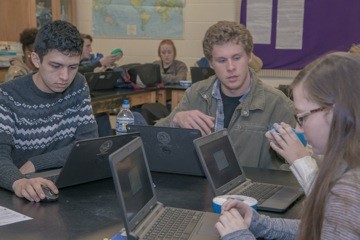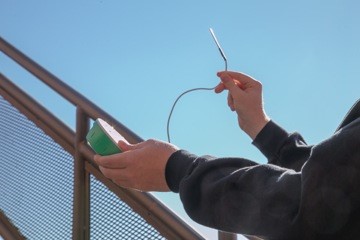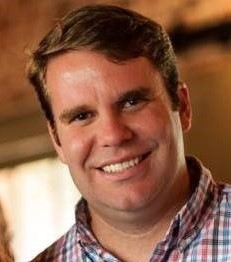The results of the 2015 Program for International Student Assessment (PISA), showed the United States ranking 25th for science, making our performance, as CNN put it, “middling.”
At least part of the problem lies with educators asking students to work with just paper and pencil in lieu of more engaging technology, which leads to students not perceiving the connection between their studies and what they consider the real world. That, in turn, causes what can be called “missing engagement.”
This year we took a big step to address that disconnect by introducing a 1:1 Chromebook program, moving towards a 100 percent digital curriculum, and enlisting a select group of science teachers to be “science ambassadors” who are evaluating several new technology products to see which can help us move from worksheet-driven classrooms to hands-on, inquiry-based classrooms in compliance with Georgia’s pending new science standards.
In addition, we recently had the opportunity to expand our field tests of one of these products when our vendor partner, PowerUp EDU, contacted us about participating in a multi-state and country science experiment as part of Boxlight STEM Day.
Related Video: A Model of Differentiated Instruction.
In this December 9 event, students from schools in Arizona, New Mexico, Florida as well as Mexico and Guatemala simultaneously used the wireless Labdisc portable STEM lab from Boxlight (which we had been piloting) to study the relationship between temperature and humidity in several locations around our East Coweta High School campus. The event paired perfectly with the AP Environmental Science classroom of Regina Ahman, a science teacher at East Coweta High. Regina also included students from her Zoology class so we could get feedback on the device and the event from students of different grade levels and science classes.
During the event, we saw that one of the advantages of a digital curriculum and streaming technology is the increased capacity for formative asse ssment. During the introductory portion of the event, students typed in answers to questions such as “How would you expect green spaces to affect temperature and humidity compared to other parts of the city?” Since the answers are recorded, Regina could ask follow-up questions, record the responses and then compare them to the final lab reports to see how student learning progressed.
ssment. During the introductory portion of the event, students typed in answers to questions such as “How would you expect green spaces to affect temperature and humidity compared to other parts of the city?” Since the answers are recorded, Regina could ask follow-up questions, record the responses and then compare them to the final lab reports to see how student learning progressed.
For the hands-on part of the event, small groups of students collected temperature and humidity data during a 15-minute walk. Then they uploaded the data and analyzed it, looking at three automatically generated graphs depicting temperature, humidity and students’ GPS locations during the walk. At one point, the graphs for their GPS data showed the temperature remaining flat. At first, the students had no idea what had happened, but further conversation helped them realize that they had been standing still at that point. These are the types of conversations that we previously couldn’t have had with studen ts because we would have had to spend 30 minutes getting them to correctly label their graph axes.
ts because we would have had to spend 30 minutes getting them to correctly label their graph axes.
In the next phase of the event, our students will link with their US and international peers who also participated in the event in order to share their findings. That component brings in even more of the global, collaborative learning in the hands-on, inquiry-based learning environment that our state standards will call for moving forward.
What we’re trying to do with simulation tools such as the Boxlight Labdisc is to replicate what our students are more than likely going to see when they go out into the job market. For example, one of our students is working at a STEM internship where he helps to make plastic using lasers. He’s not measuring the plastic’s temperature with a regular thermometer. Instead he uses lasers that constantly collect data.
Obviously, we can’t always afford to bring in technology that reflects what students will see on the job. But our current effort takes us several steps closer to actually replicating the real world in the classroom. And that is what we’re striving to do with our classroom experiences: make them mirror the things that are actually going on out in the world. Judging from our students’ responses to the Boxlight STEM Day activity, this is how we’ll close the student engagement gap and move overall science achievement up and away from middling.












